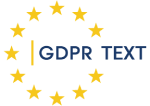Article 11 GDPR. Processing which does not require identification
1. If the purposes for which a controller processes personal data do not or do no longer require the identification of a data subject by the controller, the controller shall not be obliged to maintain, acquire or process additional information in order to identify the data subject for the sole purpose of complying with this Regulation.
2. Where, in cases referred to in paragraph 1 of this Article, the controller is able to demonstrate that it is not in a position to identify the data subject, the controller shall inform the data subject accordingly, if possible. In such cases, Articles 15 to 20 shall not apply except where the data subject, for the purpose of exercising his or her rights under those articles, provides additional information enabling his or her identification.
ISO/IEC 27701, adopted in 2019, added additional ISO/IEC 27002 guidance for PII controllers.
Here is the relevant paragraphs to article 11(2) GDPR:
7.3.2 Determining information for PII principals
Control
The organization should determine and document the information to be provided to PII principals regarding the processing of their PII and the timing of such a provision.
Implementation guidance
The organization should determine the legal, regulatory and/or business requirements for when information is to be provided to the PII principal (e.g. prior to processing, within a certain time from when it is requested, etc.) and for the type of information to be provided.
Depending on the requirements, the information can take the form of a notice. Examples of types of information that can be provided to PII principals are:
[…]
Sign in
to read the full text
The latest consolidated version of the Regulation with corrections by Corrigendum, OJ L 127, 23.5.2018, p. 2 ((EU) 2016/679). Source: EUR-lex.
(57) If the personal data processed by a controller do not permit the controller to identify a natural person, the data controller should not be obliged to acquire additional information in order to identify the data subject for the sole purpose of complying with any provision of this Regulation. However, the controller should not refuse to take additional information provided by the data subject in order to support the exercise of his or her rights. Identification should include the digital identification of a data subject, for example through authentication mechanism such as the same credentials, used by the data subject to log-in to the on-line service offered by the data controller.
(64) The controller should use all reasonable measures to verify the identity of a data subject who requests access, in particular in the context of online services and online identifiers. A controller should not retain personal data for the sole purpose of being able to react to potential requests.

ISO/IEC 27701, adopted in 2019, added additional ISO/IEC 27002 guidance for PII controllers.
Here is the relevant paragraph to article 11(1) GDPR:
7.4.5 PII de-identification and deletion at the end of processing
Control
The organization should either delete PII or render it in a form which does not permit identification or re-identification of PII principals, as soon as the original PII is no longer necessary for the identified purpose(s).
[…]
Sign in
to read the full text